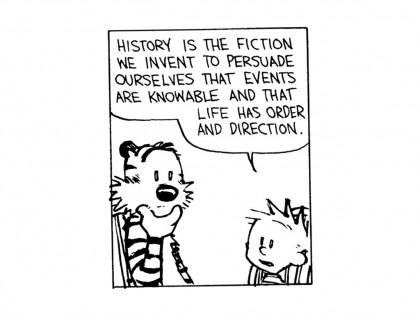People who understand digital get how it has changed how they think about the role and reach of communication. It is a deep and structural change. But, this new thinking doesn’t turn out to be very digital – in fact, digital has very little to do with the digital things we do.
Let me try to explain this: Thinking doesn’t start with digital, but digital has changed how we think …
We view problems and projects differently today than we did. And try to work with clients differently
. We used to have an ad-hoc mind-set. Sure, we buildt long-term strategies for communication, but the creative output was almost exclusively pulses.
Which, when you think about it is really strange: Why is strategy long-term and creative short-term? It doesn’t make any sense – it has just been the thinking behind everything that has been produced for the last half-century, and it has shaped the creative products that we output.
- It has probably got to do with this:
- – Originality / freshness, which is only a limitation if the chosen media is static and unable to create new versions or impressions of itself.
– Cost of media spend, which is only relevant if you choose to invest your money on surfaces where you have to pay to have a presence and if this presence comes at an extreme cost.
But none of these are absolutes; they are all changeable or exchangeable ideas.
A quote from the Apple boardroom in 1984 reads: “Everything we know is wrong”. And this might be true; everything we know is based upon facts and ideas from people no smarter than us, and we can change those truths. (As Steve Jobs points out here).
If we are to see where we are going, we need to stop looking backwards (As Mcluhan points out and which still is a very valid statement).
Sure the past is proven and safe, and the future is, I don’t know – and nobody does. Looking into pitch darkness or a glaring burn-out of white is the most interesting thing about it.
Short-term solutions are artificially excepted, but seldom a good answer
6Surgical Therapy buy viagra Hyperprolactinaemia.
.
If you are truly considering solving the problem, it is not solved in a week – or six. It demands attention from the brand long-term, with permanence. Which means intelligent, diverse communication often – but not always – integrated into the business decisions.
Even the strongest brand impression through pulse-based advertising does not stand the test of time. There are plenty of examples where huge dents have been made to brands through faulty business decision, but where the brand fades back into place within a matter of months or years – and this would also be true for pulse-based advertising.
Anything created within a week, or six, is temporary. It is only through permanence we are able to create a valid and lasting difference. (See Adrian Ho’s take on this here).
Digital is not in the business of helping companies short term, digital is in the business of helping them long term.
It is more than digital advertising or digital design – digital integrates into every aspect of communcation, and as such grows up to (finally) become the one tool that connects it all.
In the words of Angela Ahrendts, CEO of Burberry “… [it] has fundamentally changed every single thing that we do…”.


